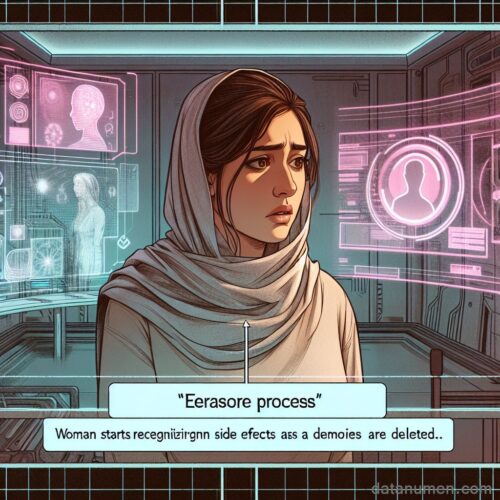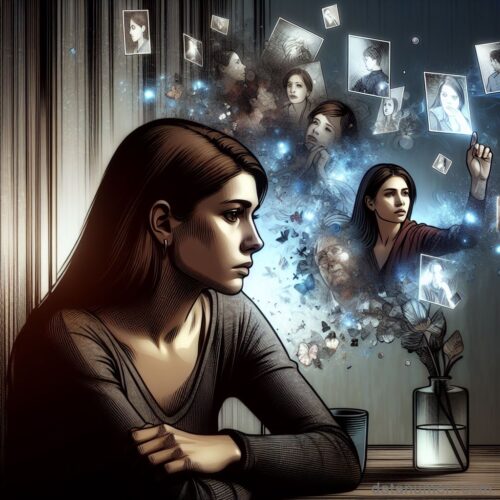1. The Memory Market
Entering a world where memories are commodities, the protagonist finds themselves in the bustling Memory Market. The market is filled with stalls and vendors offering different memories for sale. Some memories are joyful and cherished, while others are painful and haunting.
The protagonist navigates through the crowded market, their heart heavy with the weight of painful memories they wish to forget. They are searching for a way to purchase a new memory that will help them escape the burden of the past. As they browse through the various options, they come across memories of love, adventure, heartbreak, and loss.
Each stall in the Memory Market is unique, offering a different selection of memories for sale. The vendors are skilled at persuading customers to buy their memories, promising them relief from their troubles or a new perspective on life. The protagonist is cautious, knowing that the wrong memory could bring more pain instead of healing.
After much contemplation, the protagonist finally finds a memory that calls out to them. It is a bittersweet memory, filled with both joy and sorrow, but it offers the promise of a fresh start. With a heavy heart and hopeful spirit, the protagonist makes their purchase and prepares to embark on a journey of forgetting and healing.

2. The Erasure Process
As the memories are erased, the protagonist starts to notice unexpected side effects and begins to question her decision.
Unforeseen Consequences
As the erasure process continues, the protagonist begins to experience unexpected side effects. At first, she dismisses them as minor inconveniences, but they gradually escalate, causing her to question the entire procedure.
Doubts Arise
The protagonist’s initial confidence in her decision to erase her memories begins to waver. She starts to question whether the benefits of forgetting the past outweigh the unforeseen consequences she is experiencing.
A Moral Dilemma
Amidst the confusion and doubt, a moral dilemma emerges. Is it worth sacrificing her memories and identity for a supposed fresh start? The protagonist grapples with this dilemma as the erasure process reaches its critical stages.

3. Confronting the Past
As the protagonist continues to navigate through the erasure of her memories, fragments of her past begin to resurface, like pieces of a puzzle slowly finding their place. Despite her attempts to bury them deep within her subconscious, these memories refuse to stay hidden, demanding to be acknowledged and processed.
The act of confronting her past brings with it a wave of emotions—pain, regret, guilt, and sometimes even a glimmer of hope. Each memory holds a different weight, each moment etched into her mind with varying degrees of intensity. Some memories are like open wounds, still raw and bleeding, while others have faded with time, becoming nothing more than blurred images in the recesses of her mind.
Confronting the past is never easy, and for the protagonist, it becomes a journey of self-discovery and healing. She is forced to come face to face with the events that shaped her into the person she is today, no matter how painful or unpleasant they may be. The process is cathartic in its own way, allowing her to confront her demons and finally find closure.
Ultimately, the protagonist must embrace her past, no matter how difficult it may be, in order to move forward and create a new future for herself. By acknowledging and accepting her memories, she gains a sense of empowerment and a newfound understanding of who she is and what she is capable of overcoming.

4. Embracing the Pain
As the protagonist navigates through her past experiences, she begins to understand that not all memories are meant to be forgotten. Some memories, no matter how painful, hold teachings that are essential for growth. It is only by facing and embracing these past traumas that she can truly move forward on her journey towards healing.
Realizing the value in acknowledging the pain that she has endured, the protagonist bravely confronts the emotions that have long been buried within her. She understands that in order to heal, she must first allow herself to feel the full extent of the hurt that was inflicted upon her.
Through this process of embracing the pain, the protagonist discovers a newfound strength within herself. She learns to find beauty in the broken pieces of her past, understanding that it is through these cracks that the light can shine through.
By accepting her past traumas and integrating them into her present self, the protagonist learns to let go of the burden that has weighed her down for so long. She finds empowerment in being able to transform her pain into a source of resilience and wisdom.

Leave a Reply